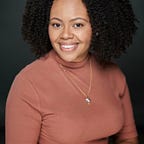Cora Elm and Charlotte Edith Anderson Monture
Indigenous Nurses in World War I
In World War I, 14 Indigenous nurses served in the Army Medical Department’s Nurse Corps. Among these nurses were Cora Elm and Charlotte Edith Anderson. They both served primarily in the Western Front in France caring for American, French, British, and Canadian ally soldiers.
Cora Elm
Cora Elm, a member of the Oneida Nation, was born on the Wisconsin Oneida reservation in 1891. She graduated the Carlisle Indian Industrial School in 1914 and then moved to Philadelphia, Pennsylvania where she attended the Episcopal Hospital School of Nursing. After graduating in 1916 she continued to work at the Episcopal Hospital as a ward supervisor.
At the start of World War I, the Protestant Episcopal Church encouraged staff and nurses to volunteer and serve in the Nurse Corps. So in 1917, aboard a large passenger vessel, Elm and the Episcopal Nurse Unit headed toward Liverpool. The unit established a base hospital at Nantes in Brittany and provided medical care to over 9,000 patients between 1917–1918. She also provided nursing services through the Red Cross in Russia, Latvia, and Lithuania. After the war, Cora continued to work in veteran hospitals throughout the nation. She also married James E. Sinnard (later divorced) and gave birth to her son James Jr. in 1926. She passed away in 1949 in 1949 with her military honors.
Charlotte Edith Anderson Monture
Charlotte was born in 1890 on the Six Nations Reserve in Ohsweken near Brantford, Ontario. She graduated high school from Brantford Collegiate Institute at a time where any type of forma education was rare for Canadian women or Indigenous people. Although she was interested in nursing, she was excluded from applying to Canadian nursing programs because she was Indigenous (see Indian Act). As a result, she went to the U.S. and completed a nursing program at the New Rochelle Nursing School in New York and was the first Indigenous registered nurse in Canada in 1914. She worked as a nurse in a private school in New Rochelle, NY and then volunteered with the local American Red Cross Nursing Service. The local Red Cross eventually merged with the American Expeditionary Force in which Charlotte became one of the 14 Indigenous nurses in the U.S. Army Nurse Corps working as a nurse in the Base Hospital in Vittel, France.In her personal diary which covers the span of 6 months, she describes her experience as emotionally draining and exhausting as they often worked 14 hours shifts.
At the end of the war, she returned to the Six Nations reserve and married Claybran Monture and had four children. She also continued to work as a nurse and midwife on the reserve at Lady Willington Hospital in Brantford and was elected as honorary president of the Ohsweken Red Cross. She was also the first Indian woman to vote in a Canadian federal election given her status as a wartime nurse (indigenous women couldn’t vote until 1960).She passed in 1996 as the last surviving Six Nation WWI veteran.
Further Resources
Learn about Native American history and the nursing profession.
Support the National Alaska Native American Indian Nurses Association.
Sources
The sources used for the above biography was referenced from Women’s History, American Women in WWI, and American Indian.
Learn More
To learn more about inclusion in nursing and be part of the national discussion to address racism in nursing, check out and share the following resources:
Know Your History
- Nursing CLIO to engage with historians and scholars committed to deep work around historical accuracy in healthcare and nursing.
- American Association for the History of Nursing to attend monthly webinars on topics of nursing history, view the calendar here.
Examine Bias
- NurseManifest to attend live zoom sessions with fellow nurses on nursing’s overdue reckoning on racism or to sign their pledge.
- Breaking Bias in Healthcare, an online course created by scientist Anu Gupta, to learn how bias is related to our brain’s neurobiology and can be mitigated with mindfulness.
- Revolutionary Love Learning Hub provides free tools for learners and educators to use love as fuel towards ourselves, our opponents, and to others so that we can embody a world where we see no strangers.
Support & Advocate
- National Coalition for Ethnic Minority Nurse Association to stay engaged with topics relevant to nurses of color.
Help us paint the internet with nursing’s diverse origin stories. Follow this Medium publication, NursesYouShouldKnow on Instagram, LinkedIn, or Facebook, or @KnowNurses on Twitter to share and re-post our articles far and wide.
